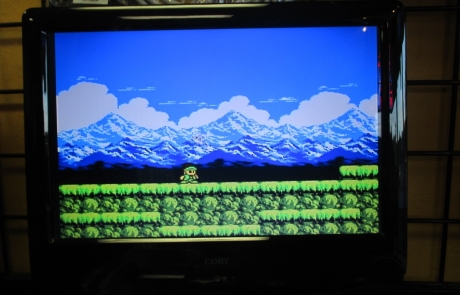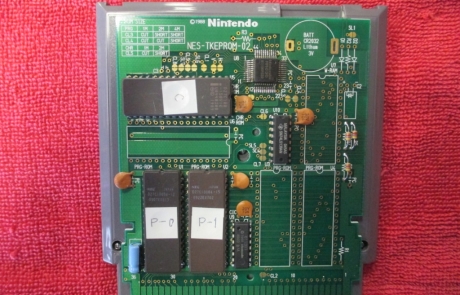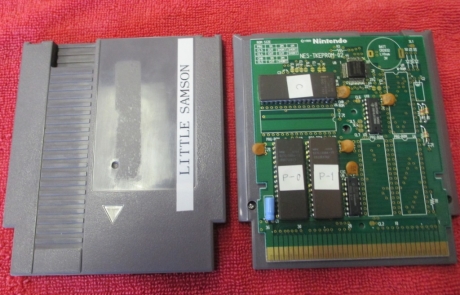Little Samson released in June of 1992 and was Taito’s attempt to compete with various Nintendo hits such as Megaman, Castlevania, and other top selling platformers of the time.
Despite the fact that Little Samson was an excellent game with lush graphics, catchy music, a good story, and solid game play, it didn’t sell well and eventually faded into obscurity.
Today, Little Samson is considered a rare and difficult game to acquire and consistently sells for hundreds of dollars, with unopened boxed copies selling for thousands.
This is a functional prototype of Little Samson; meaning, it was issued by Nintendo for game critics to review or developers to work on prior to its release to the general public. What makes prototypes so unique are that they were never mass produced so there are very few known to exist.
Furthermore, many prototypes contain changes or are incomplete versions of the released title because they were in the developmental phase. It is these changes, of what the game was prior to release, that draw collectors and often a hefty price tag to them.
The sad destiny of prototypes is that unlike their mass produced cousins, they are fated to die. Nintendo patented TKEPROMS (commonly called “Eproms”) which essentially permitted developers to read and write data on the cartridge. However, the Eproms eventually decay with time; excessive UV exposure can accelerate this process or simply erase the Eproms immediately. This is commonly referred to as “Bit Rot”.
The Eproms were originally covered with an official Nintendo sticker (Note the stickers on the black circuit boards – they are actually covering the hole that houses the Eproms). These stickers are a good way to verify the authenticity of an official Nintendo prototype.
Another interesting detail regarding prototypes is that they seldom had actual artwork on the cartridge. In fact, many people mistake prototypes as games with labels ripped off.








